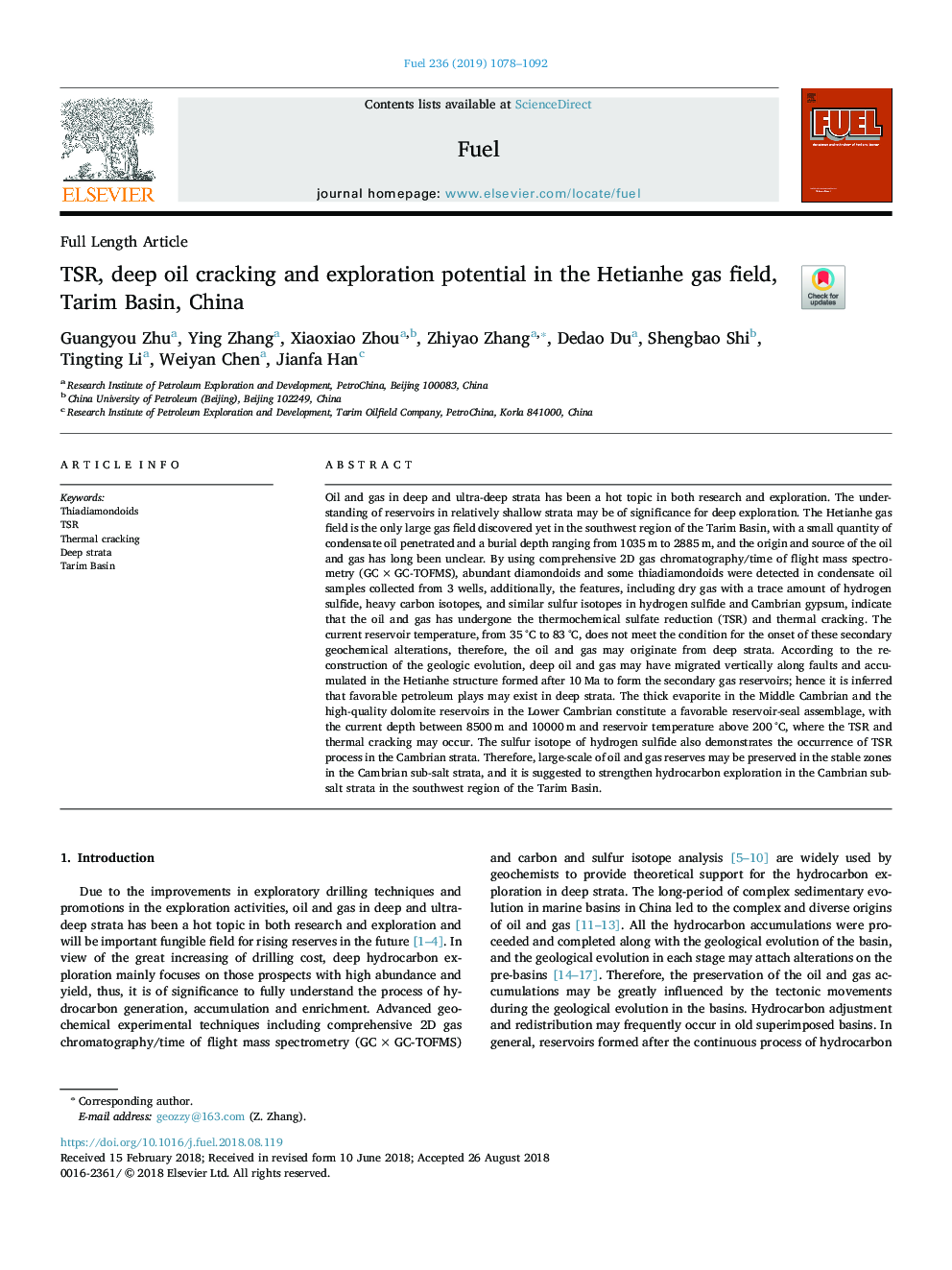| کد مقاله | کد نشریه | سال انتشار | مقاله انگلیسی | نسخه تمام متن |
|---|---|---|---|---|
| 11030257 | 1646362 | 2019 | 15 صفحه PDF | دانلود رایگان |
عنوان انگلیسی مقاله ISI
TSR, deep oil cracking and exploration potential in the Hetianhe gas field, Tarim Basin, China
دانلود مقاله + سفارش ترجمه
دانلود مقاله ISI انگلیسی
رایگان برای ایرانیان
موضوعات مرتبط
مهندسی و علوم پایه
مهندسی شیمی
مهندسی شیمی (عمومی)
پیش نمایش صفحه اول مقاله

چکیده انگلیسی
Oil and gas in deep and ultra-deep strata has been a hot topic in both research and exploration. The understanding of reservoirs in relatively shallow strata may be of significance for deep exploration. The Hetianhe gas field is the only large gas field discovered yet in the southwest region of the Tarim Basin, with a small quantity of condensate oil penetrated and a burial depth ranging from 1035â¯m to 2885â¯m, and the origin and source of the oil and gas has long been unclear. By using comprehensive 2D gas chromatography/time of flight mass spectrometry (GCâ¯Ãâ¯GC-TOFMS), abundant diamondoids and some thiadiamondoids were detected in condensate oil samples collected from 3 wells, additionally, the features, including dry gas with a trace amount of hydrogen sulfide, heavy carbon isotopes, and similar sulfur isotopes in hydrogen sulfide and Cambrian gypsum, indicate that the oil and gas has undergone the thermochemical sulfate reduction (TSR) and thermal cracking. The current reservoir temperature, from 35â¯Â°C to 83â¯Â°C, does not meet the condition for the onset of these secondary geochemical alterations, therefore, the oil and gas may originate from deep strata. According to the reconstruction of the geologic evolution, deep oil and gas may have migrated vertically along faults and accumulated in the Hetianhe structure formed after 10â¯Ma to form the secondary gas reservoirs; hence it is inferred that favorable petroleum plays may exist in deep strata. The thick evaporite in the Middle Cambrian and the high-quality dolomite reservoirs in the Lower Cambrian constitute a favorable reservoir-seal assemblage, with the current depth between 8500â¯m and 10000â¯m and reservoir temperature above 200â¯Â°C, where the TSR and thermal cracking may occur. The sulfur isotope of hydrogen sulfide also demonstrates the occurrence of TSR process in the Cambrian strata. Therefore, large-scale of oil and gas reserves may be preserved in the stable zones in the Cambrian sub-salt strata, and it is suggested to strengthen hydrocarbon exploration in the Cambrian sub-salt strata in the southwest region of the Tarim Basin.
ناشر
Database: Elsevier - ScienceDirect (ساینس دایرکت)
Journal: Fuel - Volume 236, 15 January 2019, Pages 1078-1092
Journal: Fuel - Volume 236, 15 January 2019, Pages 1078-1092
نویسندگان
Guangyou Zhu, Ying Zhang, Xiaoxiao Zhou, Zhiyao Zhang, Dedao Du, Shengbao Shi, Tingting Li, Weiyan Chen, Jianfa Han,